It’s all fun and games until you get birds involved…then mayhem, hilarity, and learning ensue!
Last summer, birding in the Amazon became a full contact sport as US and Peruvian educators and students raced around the grounds outside the Amazon library - flapping their “wings” as they searched for resources needed to survive! Language barriers dissolved as hands were clasped and teams were formed. Laughter filled the air as educators learned to communicate with hand signals and pantomime.
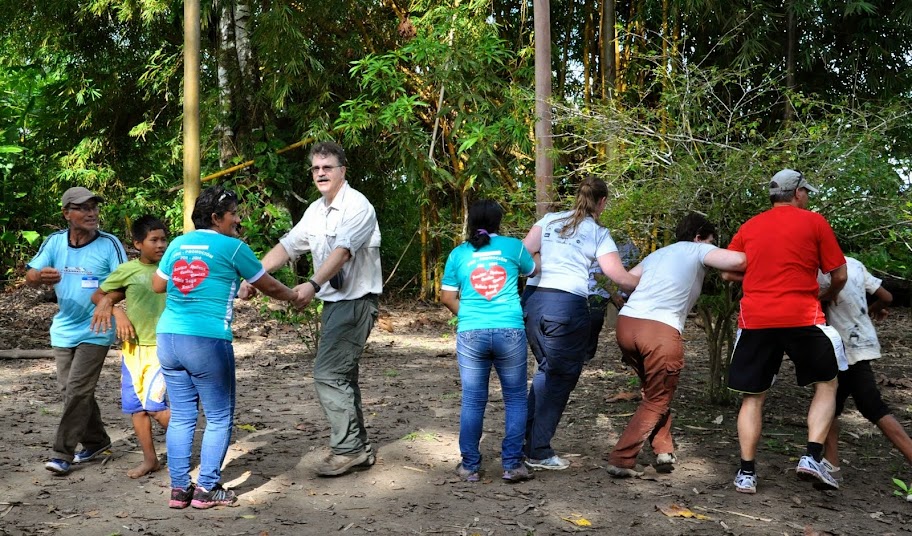
How does magic like this happen? It takes partnerships and a lot of planning, but it is so worth it! During the annual Educator Academy in the Amazon for K-12 teachers, we partner with the Cornell Lab of Ornithology to bring their BirdSleuth programs to the Amazon.

US educators work with Lilly Briggs, Cornell’s International BirdSleuth coordinator and are introduced to the new Habitat Connections curriculum. This great program uses inquiry, games, and citizen science to help students discover the diverse habitat need of birds and the challenges they face when migrating. We then partner with CONAPAC’s Amazon Library and host a similar teacher training for Peruvian educators – many of which have to travel for hours by boat to make the training.
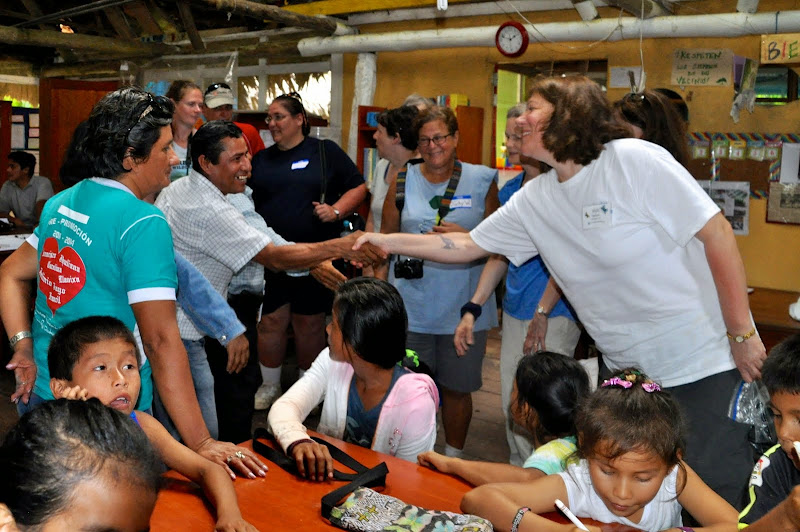
The high point of all this training is an afternoon of fun and community building between US and Peruvian teachers. Together we get to “field test” several Habitat Connections activities with the students who visit the Amazon library after school each day.
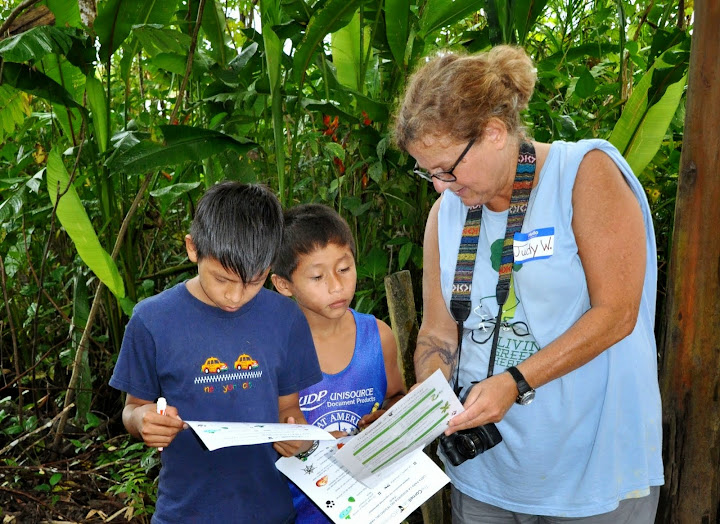
It was a day none of us will ever forget, but we left with way more than just happy memories. All of us have new tools and resources that will improve our teaching and engage our students – whether we teach in a one room school in the Amazon, a private school in NYC, or an elementary school in Tuscola, Illinois.
So how does all this translate back to a US classroom? Here’s how one teacher took what she learned in the Amazon and integrated it into her classroom.
Pam White-Evans, 6th grade teacher at Jefferson Elementary School in Tuscola, IL.
(Pam teaches math, science, and social studies, but if she ever needs another career, she has a real talent for talking to howler monkeys in rehab!)
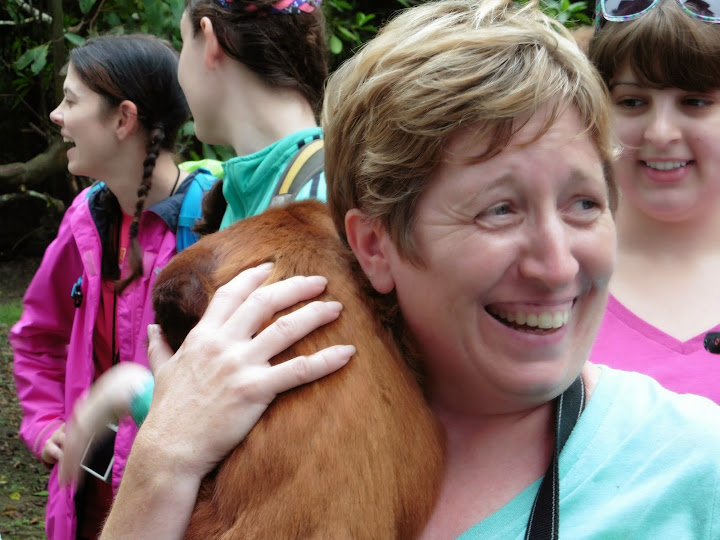
Connecting the Amazon to My Classroom via BirdSleuth
“Our first science unit of the year this fall was Birdsleuth’s Habitat Connections. It was very interactive and the students really enjoyed this aspect of the curriculum.
The first lesson was Habitat Investigation. This lesson gave the students a chance to get outside and explore their schoolyard. We had one particular area in mind that we would like to improve, so we studied it extensively. This was the start of information gathering for a grant that we applied for. The students were introduced to the idea of citizen science. It was an idea they really liked. We got out our binoculars and took a bird walk and practiced taking data to input into eBird.
The second lesson (and their favorite!) was Migration Obstacles. It was a beautiful, slightly windy, rather warm day when we did this activity. This activity is so much fun because everyone is involved in some way during the exercise. Improvising “hazards” makes it interesting. Our hazards ranged from a “ghost” building to wetlands to glass buildings and an airstrip, cars to cats. The children enjoyed being the hazard as well as trying to dodge the hazards. It wasn’t as easy as they thought it would be. We talked about ways to improve the migration route and make it more bird friendly. Then they tried again and were much more successful.
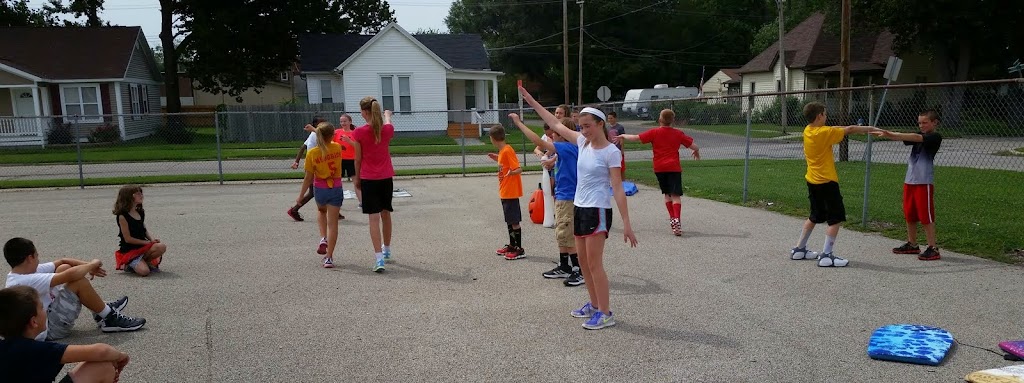
There are some very good slides to go along with each lesson. We looked at the migration routes that certain birds followed. They were interested to see the birds that were in South America near the area where we visited the Amazon.
The third lesson, Bird Survivor, teaches about the life cycle of birds in an interactive game. The “Fact or Fiction” is a good way to get them thinking about some common misconceptions they may have about birds. For example, do all birds build nests? The survivor games goes through the life cycle of birds by having some students be the bird and the rest of the class telling them their fate. In the end, not all are successful. It is sometimes hard being a bird!
The fourth lesson, To Migrate or Not, looks at tropical and temperate residents and migrants. Talking about tropical migrants was the perfect time to talk about the birds in the Amazon! Through my eBird account, we looked at many of the birds I had seen while visiting. We could then see if they were migratory birds or if they lived in the area year round. The students were able to see additional hazards of migration. This tied in with the sixth lesson, Modeling Migration, that takes a close look at eBird. Students were able to look closely at data and learn to decipher what the graphs were trying to tell them.
The fifth lesson is Scientist in Action. I don’t believe that too many of the students had thought that scientists actually study birds and what they do. Nate Senner’s activities intrigues the students. They found his study interesting, but many thought it would be really hard to do that.
The seventh and final lesson is Improve Your Bird Habitat. After going through all the lessons, we took another look at the area that we would like to improve in our school yard. We decided to make the area an outdoor classroom where we can observe birds and other wildlife, as well as attract Monarch butterflies. We went through the grant application, so the students could see what needed to be done. They drew sketches and helped write the answers to the questions. We look forward to finding out whether or not we will be funded for our project!
I ended the unit with a slideshow of pictures from my trip to the Amazon. The students were intrigued by the pictures and the information that I shared with them.”
So what’s next?
We have another Educator Academy in the Amazon scheduled for July 1-11, 2015. This year, as part of the program, we will conduct two BirdSleuth training for US and Peruvian teachers and expand our reach deeper into the Amazon so we can share this wonderful resource with even more Amazon teachers and students. This is our way of giving back and thanking the Amazon and its people for allowing us to use their backyard as our classroom!
We’d love to have you join us! More info on the 2015 Educator Academy can be found here: http://www.amazonworkshops.com/educator-academy.html

Christa Dillabaugh is our Education and the Rainforest Editor. A former middle school and high school science educator, she coordinates experiential field programs for educators and students in the rainforests of Central and South America. She currently serves as education director for Amazon Rainforest Workshops and loves traipsing through rainforest mud in search of teachable moments! You can read her Amazon field notes at http://amazonworkshops.wordpress.com/
Photo Credits: ©Christa Dillabaugh, Amazon Rainforest Workshops
